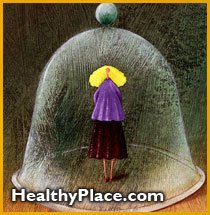Friends and Lovers

I am learning to see my love partner without distortion; to value her as highly as I value myself; to give without expecting anything in return; to commit myself fully to her welfare. Only then can love move freely between us without apparent effort. It's unconditional love between best friends.
When we are able to love in this selfless manner, we experience a release of energy. We cease to be consumed by the details of our relationship, or the need to operate within the artificial structure of exercises; we spontaneously treat each other with love and respect. Love becomes automatic.
My forever lover is my very best friend!
LoveNote. . . The only way to have a friend is to be one. ~ Ralph Waldo Emerson
I believe that friendship among lovers is essential to unconditional love and is the primary ingredient for a deep and lasting love relationship. I trust her with the deepest murmurings of my soul. She knows the best and the worst of me and yet loves me through and through -- a friend as well as a lover.
LoveNote. . . Never close your lips to those to whom you have opened your heart. ~ Charles Dickens
In order to experience the kind of relationship I want, I accept the fact that, in order to understand each other, my love partner and I must have clearly developed channels of communication. I cultivate transparency of myself by being a master in the art of self-disclosure. I know that when the inclination to reveal myself to the one I love is blocked, I close myself to her and experience emotional difficulties. I promise to never hide behind a facade.
I will forever practice telling my love partner exactly what pleases me, decreasing her reliance on mental telepathy. I express preferences instead of demands. I believe that I can never know myself except as an outcome of disclosing myself to her.
In ways I may not fully understand, self-disclosure helps me to see things, feel things, imagine things, hope for things that I could never have thought possible. The invitation to transparency, then, is really an invitation to authenticity. It is also an invitation to allow myself to be vulnerable.
When I allow my love partner to see me for who I really am right now, I am less afraid I will be rejected in the future. When my love partner accepts and loves me unconditionally, I know I will never have to hide in the relationship in the future.
To have inner peace it is necessary to be consistently loving in what I think, in what I say and in what I do. I think thoughts of love. I speak words of love. I demonstrate unconditional love for my love partner in all that I do.
Openness means being willing to communicate my deepest feelings. There can be no intimacy without conversation. The only way my love partner and I can truly communicate is to tell the truth. Truthful communication moves love partners and creates a condition of unity, love and satisfaction.
For intimacy to grow in a healthy love relationship there can be no withholding; feelings - both positive and negative - must be shared equally between love partners. The act of withholding the truth is always potentially a lie.
The energy required for the self-discipline of honesty is far less than the energy required for withholding. My love partner and I are dedicated to the truth and live in the open, and through the exercise of our courage to live in the open, we become free from fear. Fear cannot exist whenever insight is valued above feeling frightened.
I listen when my lover shares without making judgment. My heart is always open to hear what my love partner has to say.
LoveNote. . . A good relationship is that in which each appoints the other guardian of his solitude. Once the realization is accepted that even between the closest human beings infinite distances continue to exist, a wonderful living side by side can grow up, if they succeed in loving the distance between them which makes it possible for each to see the other whole against a wide sky. ~ Rainer Maria Rilke
Someone said that it is possible to be together so much that we suffocate each other. Perhaps. I do not allow this to happen in my love relationship. I believe that love includes letting go when my partner needs freedom; holding her close when she needs care. I am committed to creating space in my relationship when needed.
We have learned to cherish both intimacy and solitude. We never feel tied to each other.
LoveNote. . . Don't smother each other. No one can grow in the shade. ~ Leo Buscaglia
At the heart of love, there is a simple secret: the lover lets the beloved be free. My love partner and I require different mixes of independence and mutuality, and the mix is freely discussed and renegotiated from time to time when necessary.
When two people in a love relationship are complete within themselves they do not experience the love they have for others as diminishing, detracting, or threatening to the love they share. They are secure within the relationship.
Insecurities bring forth jealousy, which, in effect, is a cry for more love. It is within your rights to ask for more affection when self-doubts surface, however, the indirect way that jealousy asks for it is counterproductive. Excessive possessiveness is inappropriate. Jealousy is the surest way to drive away the very person you may fear losing.
It is an irony that the more possessive I am, the more love I demand, the less I receive; while the more freedom I give, the less I demand, the more love I receive. I take great pleasure in watching my love partner be fully free and fully alive!
LoveNote. . . Love is not possessive. ~ I Corinthians 13:4
We encourage each other to widen our circle of friends. We each seek to ever expand our horizons. We enjoy celebrating life together and with friends!
I know that if I expect to be the only person who matters to my love partner I am setting myself up for disappointment. As wonderful as true love can be, no one person can meet all your needs. My love partner is, and will always be my very best friend, and she is not my only friend.
I fully expect my love partner to have other passionate interests other than me. To extend the freedom to develop her own interests in other people and hobbies can only empower our relationship. Freedom can never confine. It can never be detrimental to the relationship. It can only open up many exciting and previously undiscovered opportunities to enjoy life.
When my lover is pursuing areas in which she excels, she is happy. I enjoy her most when she is happy. People are easier to love when they are happy.
Trust is forever present in our love relationship; trust and deep commitment to each other, and loyalty and devotion. This allows us the freedom to care about people of the opposite sex and to enjoy friendships with them, and when we sit down together in the evening to share the events of the day, we do not have to ask if our love partner has been faithful.

LoveNote. . . Love from one being to another can only be that two solitudes come nearer, recognize and protect and comfort each other. ~ Han Suyin
The stronger and more secure we become, the more we are willing to be ourselves while encouraging our love partner to do the same.
Genuine unconditional love not only respects the individuality of the other but actually seeks to cultivate it, even at the risk of separation or loss. The ultimate goal remains the spiritual growth of my love partner, the solitary journey to peaks that can be climbed only alone.
LoveNote. . . But let there be spaces in your togetherness, and let the winds of the heavens dance between you. Love one another, but make not a bond of love: let it rather be a moving sea between the shores of your souls. Fill each other's cup but drink not from one cup. Sing and dance together and be joyous, but let each one of you be alone. Give your hearts, but not into each other's keeping. For only the hand of Life can contain your hearts. And stand together yet not too near together; for the oak tree and the cypress grow not in each other's shadow. ~ Kahlil Gibran
I believe that no matter how committed my forever love relationship, I will always be "single" as well as a part of a couple. Unconditional love is a special, intense connection, and it is not an answer to all or even most individual problems. No one can make me happy but me.
Adapted from the book, "How to Really Love the One You're With."
APA Reference
Staff, H.
(2008, November 2). Friends and Lovers, HealthyPlace. Retrieved
on 2026, January 6 from https://www.healthyplace.com/relationships/celebrate-love/friends-and-lovers
 Effective medical treatments now exist for the full range of mood disorders, from mild depression to severe manic depression. Treatment decisions are based on the severity of the symptoms as well as the type of symptomatology. There are a wide variety of treatments that are now available, but research studies consistently demonstrate that combined psychotherapy and medication treatments produce the best results. The psychotherapy treatments work by helping with the psychosocial and interpersonal adjustment of the individual, whereas the drugs help with the physical and physiologically based symptoms. Psychotherapy seems to help by improving the patient's willingness to continue with the medication treatment, also.
Effective medical treatments now exist for the full range of mood disorders, from mild depression to severe manic depression. Treatment decisions are based on the severity of the symptoms as well as the type of symptomatology. There are a wide variety of treatments that are now available, but research studies consistently demonstrate that combined psychotherapy and medication treatments produce the best results. The psychotherapy treatments work by helping with the psychosocial and interpersonal adjustment of the individual, whereas the drugs help with the physical and physiologically based symptoms. Psychotherapy seems to help by improving the patient's willingness to continue with the medication treatment, also. Thomas Moore, best-selling author, philosopher, and psychotherapist, laments that the great malady of the twentieth century has been the loss of soul. Yet his book, "Care Of The Soul: A Guide To Cultivating Depth And Sacredness In Everyday Life," quickly rose to the bestseller list, indicating that while he might be right about the loss of soul, many twentieth century inhabitants eagerly endeavor to find it.
Thomas Moore, best-selling author, philosopher, and psychotherapist, laments that the great malady of the twentieth century has been the loss of soul. Yet his book, "Care Of The Soul: A Guide To Cultivating Depth And Sacredness In Everyday Life," quickly rose to the bestseller list, indicating that while he might be right about the loss of soul, many twentieth century inhabitants eagerly endeavor to find it. It is perhaps easy to understand why people should feel this way. For one thing, most people know that mental illness is very serious -- perhaps totally incapacitating -- but don't have any idea of what causes it, or what it is like. They fear it: they fear the "loss of their mind", and they fear "being locked up in a mental hospital" presumably with lots of other "crazy" people. In addition, most people conceive someone who is mentally ill to be disruptive, irrational, violent, and dangerous. In reality, only a very tiny percentage of victims of mental illness (for example people with extreme mania) ever act that way; I suspect that this common, but badly erroneous, picture of the mentally ill comes directly from television and movies where it is the norm.
It is perhaps easy to understand why people should feel this way. For one thing, most people know that mental illness is very serious -- perhaps totally incapacitating -- but don't have any idea of what causes it, or what it is like. They fear it: they fear the "loss of their mind", and they fear "being locked up in a mental hospital" presumably with lots of other "crazy" people. In addition, most people conceive someone who is mentally ill to be disruptive, irrational, violent, and dangerous. In reality, only a very tiny percentage of victims of mental illness (for example people with extreme mania) ever act that way; I suspect that this common, but badly erroneous, picture of the mentally ill comes directly from television and movies where it is the norm.